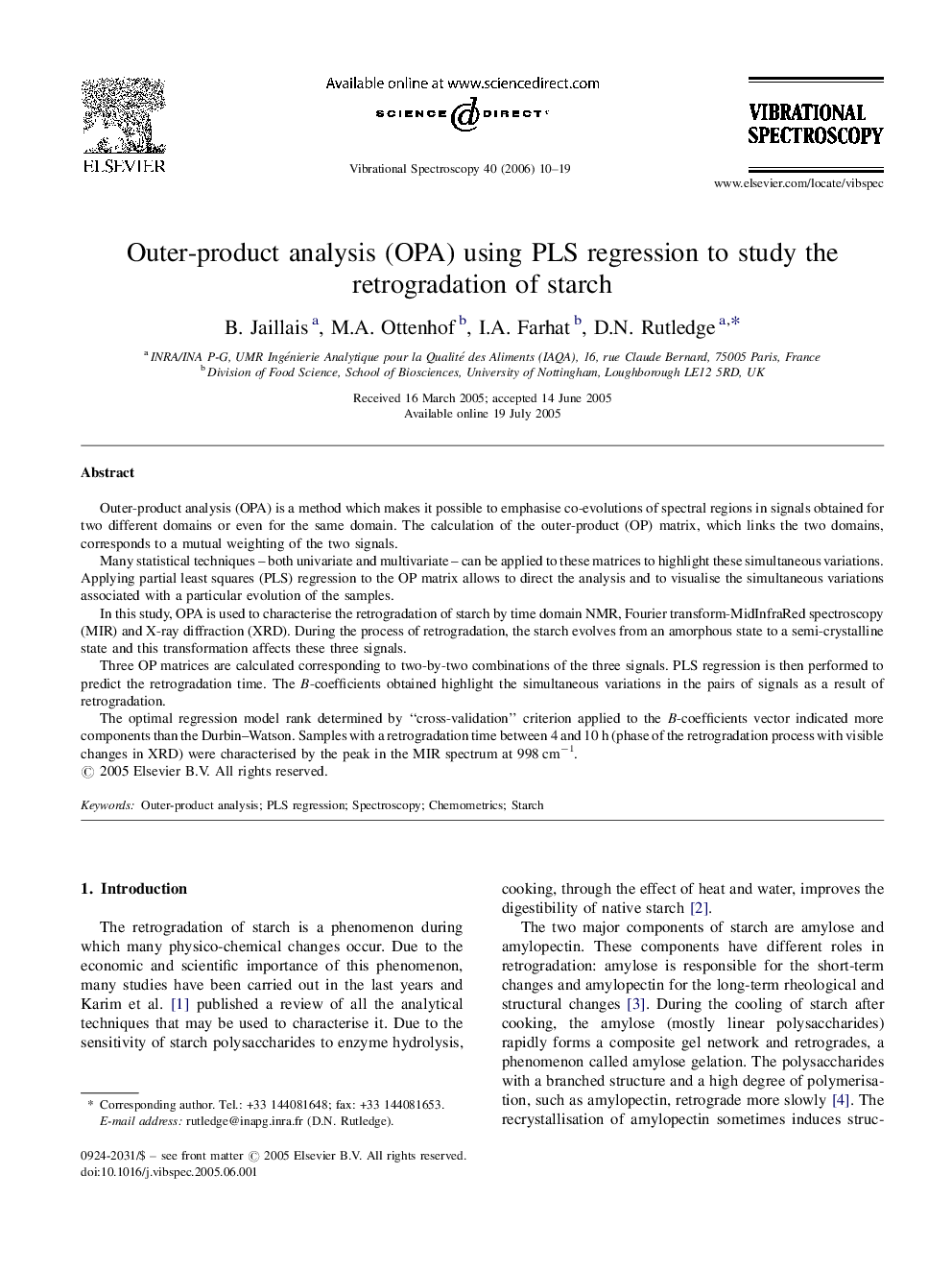| Article ID | Journal | Published Year | Pages | File Type |
|---|---|---|---|---|
| 1251200 | Vibrational Spectroscopy | 2006 | 10 Pages |
Outer-product analysis (OPA) is a method which makes it possible to emphasise co-evolutions of spectral regions in signals obtained for two different domains or even for the same domain. The calculation of the outer-product (OP) matrix, which links the two domains, corresponds to a mutual weighting of the two signals.Many statistical techniques – both univariate and multivariate – can be applied to these matrices to highlight these simultaneous variations. Applying partial least squares (PLS) regression to the OP matrix allows to direct the analysis and to visualise the simultaneous variations associated with a particular evolution of the samples.In this study, OPA is used to characterise the retrogradation of starch by time domain NMR, Fourier transform-MidInfraRed spectroscopy (MIR) and X-ray diffraction (XRD). During the process of retrogradation, the starch evolves from an amorphous state to a semi-crystalline state and this transformation affects these three signals.Three OP matrices are calculated corresponding to two-by-two combinations of the three signals. PLS regression is then performed to predict the retrogradation time. The B-coefficients obtained highlight the simultaneous variations in the pairs of signals as a result of retrogradation.The optimal regression model rank determined by “cross-validation” criterion applied to the B-coefficients vector indicated more components than the Durbin–Watson. Samples with a retrogradation time between 4 and 10 h (phase of the retrogradation process with visible changes in XRD) were characterised by the peak in the MIR spectrum at 998 cm−1.
